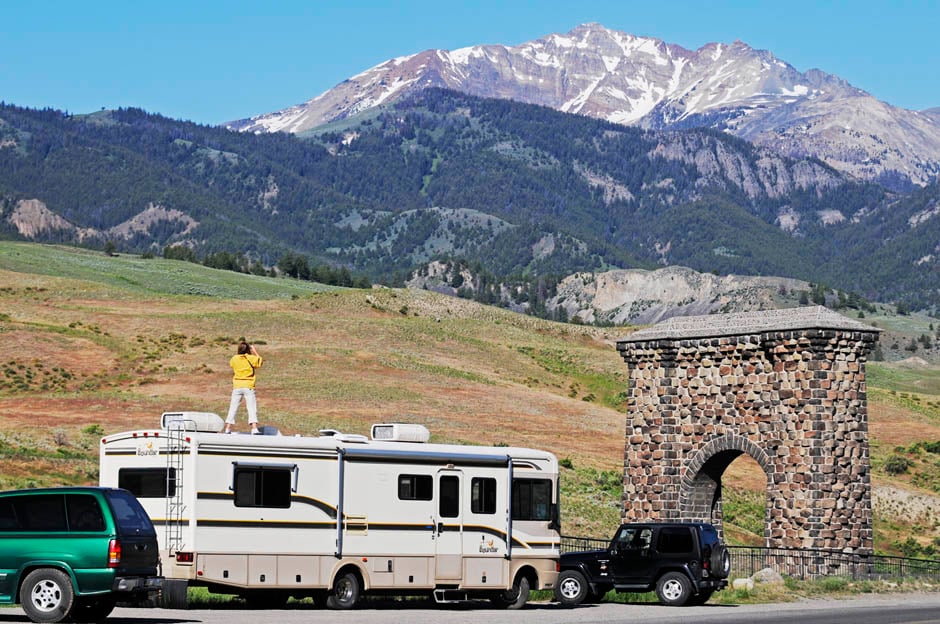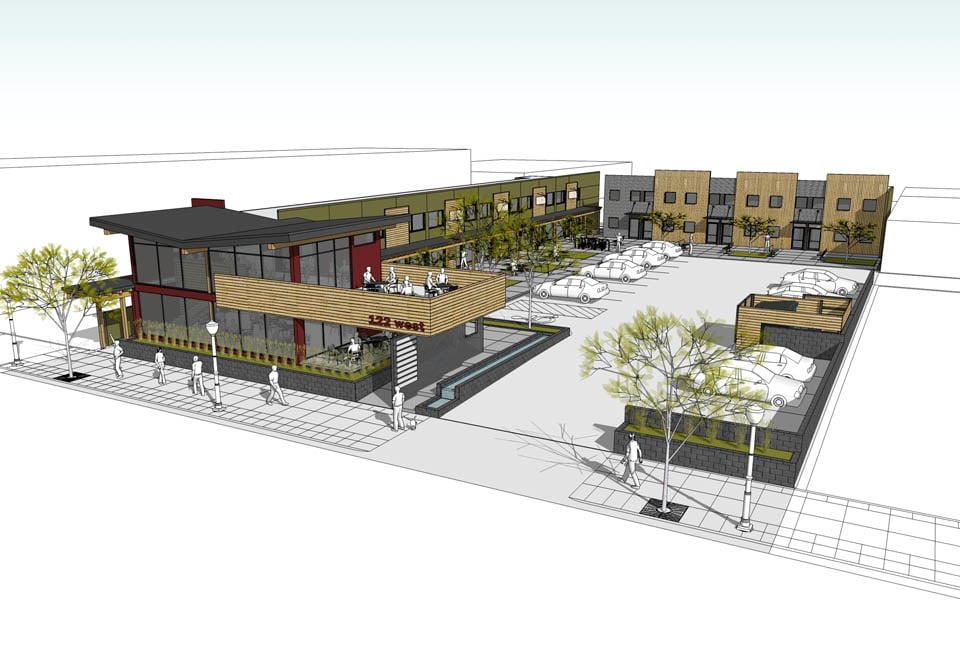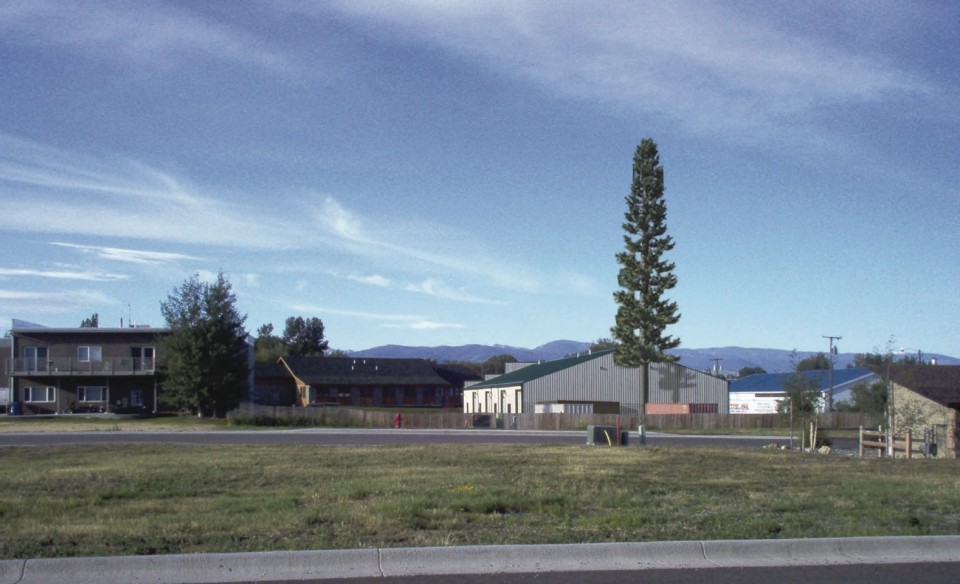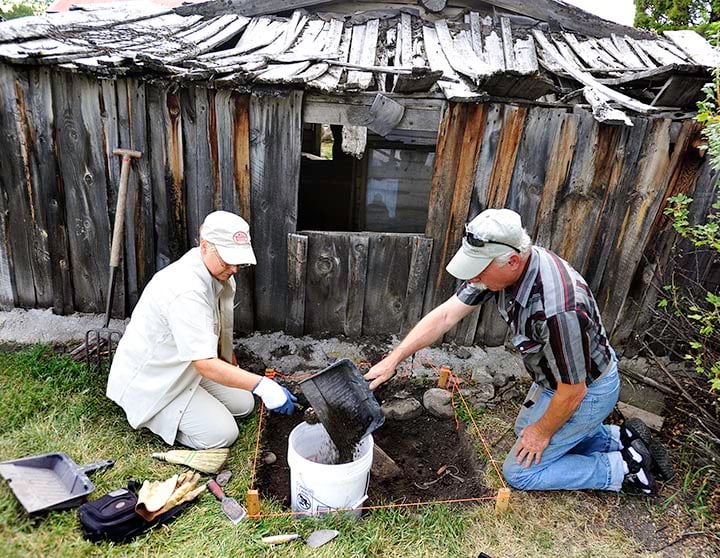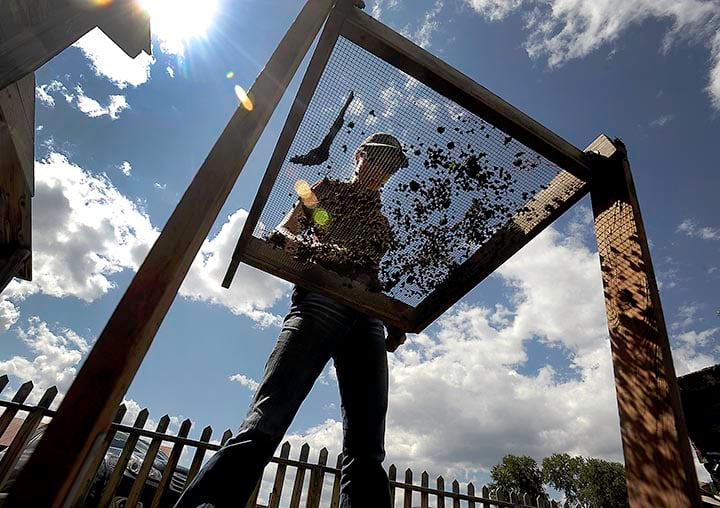
New Gallatin Field Terminal Dedicated
Standing in the new $40 million expansion of Gallatin Field Airport’s terminal, Kathi Coyle loved what she saw.
“It’s beautiful,” said Coyle, a Bozeman caterer, as her college-bound daughter repacked an over-stuffed suitcase for a flight to New York City.
“I think it’s marvelous. It so suits Bozeman. I love it,” Coyle said. “When you go to O’Hare or LaGuardia or Denver, there’s nothing beautiful to look at.”
After two years of construction at what officials called “Montana’s fastest growing airport,” the terminal has now doubled in size, big enough to handle up to 1.5 million people a year, twice the 750,000 passengers who now arrive and depart.
The terminal expansion kept the rustic ski-lodge look of the original, repeating the use of Gallatin Canyon granite and wooden beams, fireplaces and artist Jim Dolan’s flying geese sculptures.
“Fantastic,” said Caleb Simmons, a Delta Airlines ticket agent. “It’s got much, much more room. It’s a lot brighter. Very nicely done.”
Airport director Brian Sprenger said he felt relieved and “ecstatic.”
“It’s definitely a world-class facility,” Sprenger said, thanking a crowd of about 50 business leaders from the Bozeman Area Chamber of Commerce and Belgrade Chamber, who came for the ribbon-cutting. “We hope you’re as proud of it as we are.”
Because of Yellowstone National Park, Big Sky and Montana State University, Sprenger said, “We bring in more people to the state of Montana than any other airport.”
“We’re eclipsing Billings,” said Richard Roehm, who served on the Airport Authority board for several years. Gallatin Field is on track to become the state’s busiest airport next year, he added.
Though the terminal is now 200,000 square feet, Sprenger said Bozeman’s Prugh and Lenon Architects wanted to keep a small-town feel. The new terminal is built at an angle to the first, so passengers don’t look down one vast concourse. Pillars of stone and wood were used to make the space feel more human-scale.
“We had outgrown our facility,” Sprenger said. Before, passengers crammed through a Transportation Security Administration screening area that was shoehorned in after the 9/11 attacks required beefed-up security. TSA employees had to X-ray luggage in a cramped area behind the ticket counters. Now security areas have much more space.
Other improvements include an informal first-floor area with tables, chairs and a big fireplace where visitors can wait for passengers. Next to that is a more spacious gift shop and new Copper Horse bistro, serving coffees, Panini sandwiches, bagels and breakfast starting at 4 a.m. There’s also a Copper Horse restaurant upstairs for passengers who’ve gone through security, to encourage people to go through screening earlier.
South-facing windows were added, Sprenger said, “to show off our beautiful valley.”
The terminal still has Dennis Harrington’s grizzly bear sculpture and the bronze cast of a T-rex skull.
The expansion was paid for with about $17 million from the federal Airport Improvement Program, the airport’s savings and $16 million in loans, to be paid off over 20 years with a $4.50 fee on every ticket leaving Bozeman.
Martel Construction owner Tony Martel was beaming. “I’m very, very proud of the airport.”
“We’re done on schedule and in budget,” said Don Stueck, Martel’s project manager.
The two-year project created jobs for about 175 construction workers.
Not everyone was cheering, however. One passenger, Mark Xander, wrote an email complaining of the “horrible” experience he had at 5:30 a.m. The new security screening area was so disorganized, it took him an hour to get through. He nearly missed his 6:30 a.m. Delta flight, and others did miss it, Xander charged.
Sprenger said it’s true there were long lines for early morning flights and about 20 people out of 550 missed their flights. He said the problem was that the federal TSA headquarters had turned down the local TSA request to install new walk-through metal detectors. So two old detectors had to be moved overnight and recertified, Sprenger said. One worked fine, but the second didn’t. And while United and Horizon delayed their flights, Delta’s left right on time.
The airport has no control over the federal TSA agency, which had the detectors working by 9:30 a.m., Sprenger said.
People like to arrive 60 minutes before a flight, but it’s wiser to arrive 75 to 90 minutes early, especially if checking luggage, to leave a margin for error, he added.
Bozeman folks should realize that their small-town airport is getting busier, too.
“Year-to-date, our traffic is up 10 to 12 percent over last year’s record,” Sprenger said.
